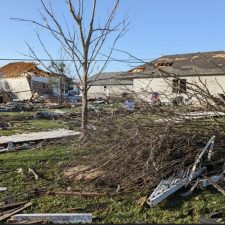
If you are injured in an accident due to someone else’s negligence, you have a right to pursue a personal injury claim against the at-fault party. If your case is successful, the court will award you compensation in the form of economic and non-economic damages.
Economic damages such as medical bills are considered straightforward since they are easy to compute, while non-economic damages such as pain and suffering present difficulty in our courts. The difficulty is based on the varying degree of each individual’s experience of pain and suffering. However, with the help of an attorney, you can seek pain and suffering damages with a likelihood of success.
Here is an explanation of critical facts you need to know about pain and suffering damages in your injury lawsuit.
What falls under pain and suffering?
Pain and suffering damages are considered the physical and mental anguish arising from an injury following an accident. As such, pain and suffering damages tend to be subdivided into two areas:
Physical Pain and Suffering
Generally, this includes any physical pain associated with your injuries. Some examples of physical pain include the following:
● Bruising
● Injuries to lumbar, thoracic, and cervical discs
● Spinal cord injuries
● Burns
● Broken bones
● Surgical recoveries
● Brain injuries
● Joint and ligament injuries
Such medical conditions tend to have long-lasting and painful effects on individuals. Therefore, the court envisions awarding pain and suffering damages as a remedy for the pain and suffering that you have previously endured and the pain and suffering that you will endure in the future, which, in some cases, may continue for the rest of your life.
Emotional Pain and Suffering (Mental Anguish)
Emotional pain means mental distress as a result of the injury. Psychological distress arising from an injury may hinder individuals from carrying out their daily activities, such as being unable to engage in basic life activities because of psychological trauma.
Other notable examples of mental anguish include:
● Anger
● Frustration
● Anxiety
● Post-traumatic stress disorder
● Insomnia
How to Prove Pain and Suffering
Unlike economic damages, pain and suffering damages are often difficult to prove. However, with the help of a lawyer, you can establish a valid claim that warrants compensation for the pain and suffering. The judge, jury, and insurance company will be more convinced that you are suffering physical and emotional pain after seeing the supporting documents instead of a lack of the said documents.
Examples of documents that can provide strong support for your claim include the following:
● Medical records
● Photographs
● Therapist notes
● Your testimony detailing the impact of your pain and suffering
● Your family or friend’s testimony describing the pain that you suffer through
● “Day in the Life” videos that depict the difficulties that you face every single day because of your accident
A personal injury attorney can help you present your case in the most convincing manner possible.
How do you calculate pain and Suffering?
Some cases tend to be novel, while others have different facts and circumstances. Therefore, calculating pain and suffering is often tricky. Pain and suffering damages are examples of general damages that are, by definition, not readily able to be quantified.
Pain and suffering damages are those that a judge or jury is willing to award you based upon your particular set of injuries. If they believe you and are sympathetic to what you have gone through, they will inevitably award greater damages than if they do not believe you.
One thing to keep in mind is that insurance companies and courts often look to prior cases to determine what is a proper result in your case. Doing a “quantum study” like this will give your lawyer an idea of the potential range of damages for your case. While prior cases are certainly helpful, there is really no way to know exactly what you will get for your case.
What happens if you are partially at fault for your accident?
At times the court may establish that you are partially at fault for the accident. This situation is often defined as contributory negligence or comparative fault. The insurance company or defense lawyer will try to magnify your own negligence to reduce the amount that they have to pay for your pain and suffering.
To use an example, if you are awarded $100,000 in damages for your pain and suffering but are found to be 50% at fault, your award will be reduced by 50% to $50,000. On the other hand, if you are not found to be at fault at all, you would recover the entire $100,000 in pain and suffering damages.
How can an attorney help?
Seeking pain and suffering damages can be difficult. However, the help of a lawyer is imperative in your personal injury lawsuit because your lawyer will:
● Help with documentation and evidence to be used in your case
● Determine liability
● Understanding the applicable law
● Convincing the jury why pain and suffering damages are necessary
● Rebutting the allegations made by the defense lawyers and/or insurance companies (such as claims of comparative fault)
● Calculating your pain and suffering
Contact a New Orleans Personal Injury Lawyer Today
If you have been injured in an accident, The Mahone Firm is here to help you and your family get through it. Contact us today for a free case review with an accident lawyer to start working towards the compensation you deserve for your pain and suffering.






